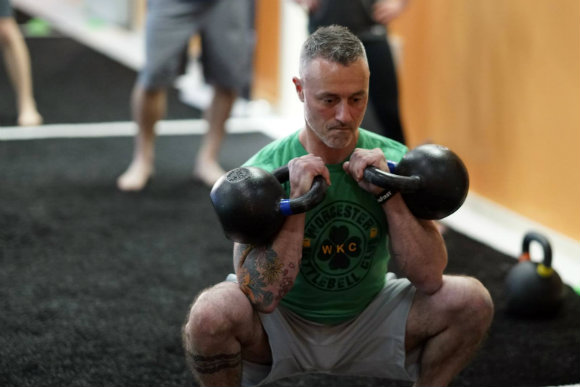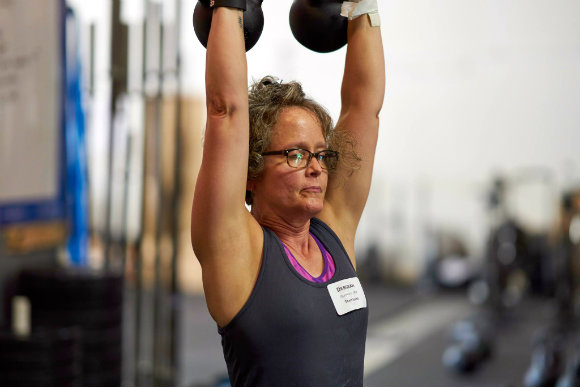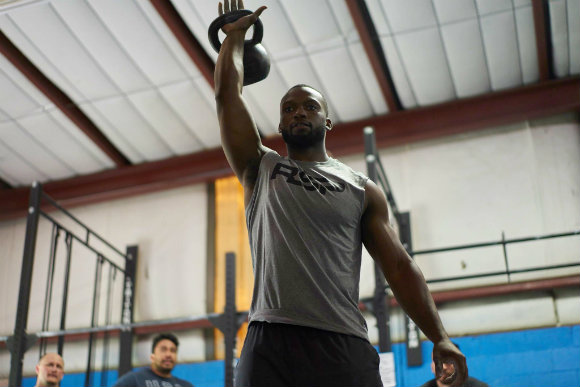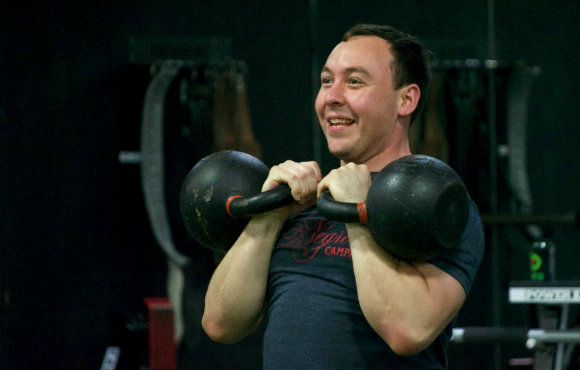Editor’s Note:
We’d like to thank our friends at StrongFirst for allowing us to re-publish this excellent piece. StrongFirst is the “School of Strength” and is the worldwide leader in instruction and certification in the safe and effective application of kettlebell, barbell and bodyweight training techniques”. To find a course or StrongFirst instructor in your area please visit www.strongfirst.com.
I am a 12-percenter. At age 58, I have a 12.4% risk of dying before I turn 68.
How do I know this?
It’s straightforward crude mortality data, the absolute risk of death for a white man in the U.S. at age 58. The relative risk of death for a black man aged 58 is 50% higher, meaning that, not adjusting for any risk factors, he has an 18% absolute risk of death before age 68. That’s almost a one in five chance of dying at what most people today regard as a relatively young age.
Women fare much better. Black women at age 58 have an absolute risk of death within ten years of 11.4%. For white women, it is 8% or 30% lower than black women.
Middle-Age Is an Opportunity, Not a Sentence
Mortality risk in the fifth and sixth decades of life is the snowball rolling down the hill. The risk of death doubles every decade starting in the fourth (your thirties) when it is only 1.6% for a white male, which seems quite benign. The numbers get really scary when you look at mortality risk in the seventh decade, 14.3% for a white man and 21% for a black man. It only gets worse from there, until you realize these are unadjusted or crude death rates that don’t take into account risk factors and health habits.
Far too many Americans regard middle-age as the start of a slow-motion death sentence, when, in fact, it is their best opportunity to not only prolong their lives but boost quality of life, as well. As a strength training advocate for over forty years, I believe this to my core. I started lifting in 1975, long before there was a shred of data in the U.S.-based English-language peer-reviewed scientific or clinical literature that individual strength had either health or athletic value. In fact, I believed in primacy of strength (i.e. it being more important than cardio alone or flexibility) before StrongFirst was even a twinkle in Pavel’s eyes.
Data demonstrating the power of physical strength and fitness in middle-age are compelling; there are impacts on overall mortality, brain health, cancer risk for both men and women, and heart health (and, it is generally true that what’s good for the heart is good for everything). Striving for a high level of fitness while that exertion is still possible is the single most important thing any adult over age fifty can do for him- or herself. Inaction will not only weigh on the individual (no pun intended), but on all of us, because nearly all mortality is preceded by illness that sucks away quality of life and economic productivity and at least some avoidable medical care spending.
So why aren’t middle-aged Americans answering this call? Because the conventional fitness industry and the government and its private sector water carriers, such as the American Heart Association and the American College of Sports Medicine have failed them. Being intentional about building and sustaining the highest level of fitness you can is a really hard path to walk, and thirty minutes daily of “physical activity” is not the answer to any meaningful health question.
Your Tool in the Fight Against Mortality
This is why the kettlebell—this odd, 200-year-old Russian creation—is so important to impacting the habits of middle-aged adults. I know now from vivid personal experience that no other tool is so adaptable to the needs of the user and so accessible to nearly anyone who is willing to learn to use it. Adaptability and accessibility are two critical but rarely discussed elements of America’s fitness deficit. Without them, the notion of long-term sustainability and manipulation of critical risk factors while passing through middle age is just a pipe dream.
When I began Shotokan karate with my son nearly three years ago (he was nine, I was 56), I learned quickly that a lifetime of bench-squat-pulldown-curl-crunch had not prepared me for the turns, kicks, blocks, strikes, complex stances, and feints of the most technical sport I’d ever tried. A friend kindly suggested I look into Pavel and kettlebells, and thus began a metamorphosis that is still unfolding. I have gone from a consummate kettlebell klutz to an older athlete whose exercise repertoire expands by the month.
Most striking, however, has been how one tool has helped maintain or improve all three major fitness components: strength, power, and endurance. Even though I no longer run or cycle, my resting heart rate remains at around 60, and my blood pressure is healthy (118/70), as are my waist:height ratio (<0.5), blood sugar (90), blood lipids (HDL = 65, ratio of 3.5:1), and weight (156 on a 5’5” frame which, ironically, gives me an “overweight” BMI that my wife’s employer’s wellness vendor says, laughably, is dangerously overweight). The impact on my karate has been transformative because get-ups and swings (and now snatches) challenged and improved my mobility in ways I could never have predicted. This is all from a consistent regimen of three self-taught training sessions weekly, of about 45 minutes each.
The Risk Factors You Must Manage
Long-term health and the prevention of premature mortality is all about risk factor management. Since you cannot change your age or gender (okay, technically you can, but that’s not really the point, is it?), you must manage the risk factors that are modifiable. These are maintaining a healthy blood sugar, blood lipids, blood pressure, and body weight, which are all possible only if you eat a diet of reasonable quality, exercise regularly (notice I did not say be “physically active”), and don’t smoke. How much of a difference in death risk does this make? A lot.
Three different large scale studies (here, here, and here) in completely different populations produced nearly the same results: if you keep these risk factors healthy, the relative reduction in mortality is 70 to 80% compared to people who have none. So, stated another way: if the absolute (unadjusted) risk of death is 20%, people in whom these risk factors are all healthy may have a death risk of around 4%. The clock will beat you eventually, but why have it run out sooner than is absolutely necessary?
And, we have not even tapped into the conversation about the impact that exercise—regular, vigorous, challenging exercise—can have on novel risk factors that we don’t routinely measure, such endothelial health, neurological function, clotting, and mental health. Or the fact that the medical establishment—unless it can co-opt and medicalize exercise, thus making it something from which it can profit—ignores exercise as salubrious and refuses to acknowledge that contrary to popular medical myth there is no known mortality ceiling on the benefits of cardiorespiratory fitness.
Your Best Bet in This Battle
And the best part? You can manage your risk factors and improve your journey through middle age with this cannonball with a handle. In the privacy of your home. In your hotel room. In your office. With friends. On your own. Inside. Outside. In the morning. In the evening. On holidays. Smart, demanding, safe kettlebell training is the end of the perpetual excuse machine that hamstrings fitness in America. It is also the tool that opens doors to all kinds of possibilities, such as living longer by living better.
Kettlebell aficionados are fond of the cannonball-with-a-handle moniker. I prefer to think of it as the world’s most effective, if awkward, life preserver.
About the Author:
Vik Khanna, is a healthcare entrepreneur, writer, and exercise coach in St. Louis, MO. He has an undergraduate degree in exercise science and physical education, is a physician assistant with experience in internal medicine and rehabilitation, and he holds a Master’s degree from The Johns Hopkins School of Public Health. In October, he will seek his SFG Level I Certification in Portland, OR. In the coming winter, he hopes to test successfully for his black belt at the Missouri Karate Association in Chesterfield, MO, where he is the conditioning coach and has created the dojo’s first ever kettlebell-centered conditioning program.





